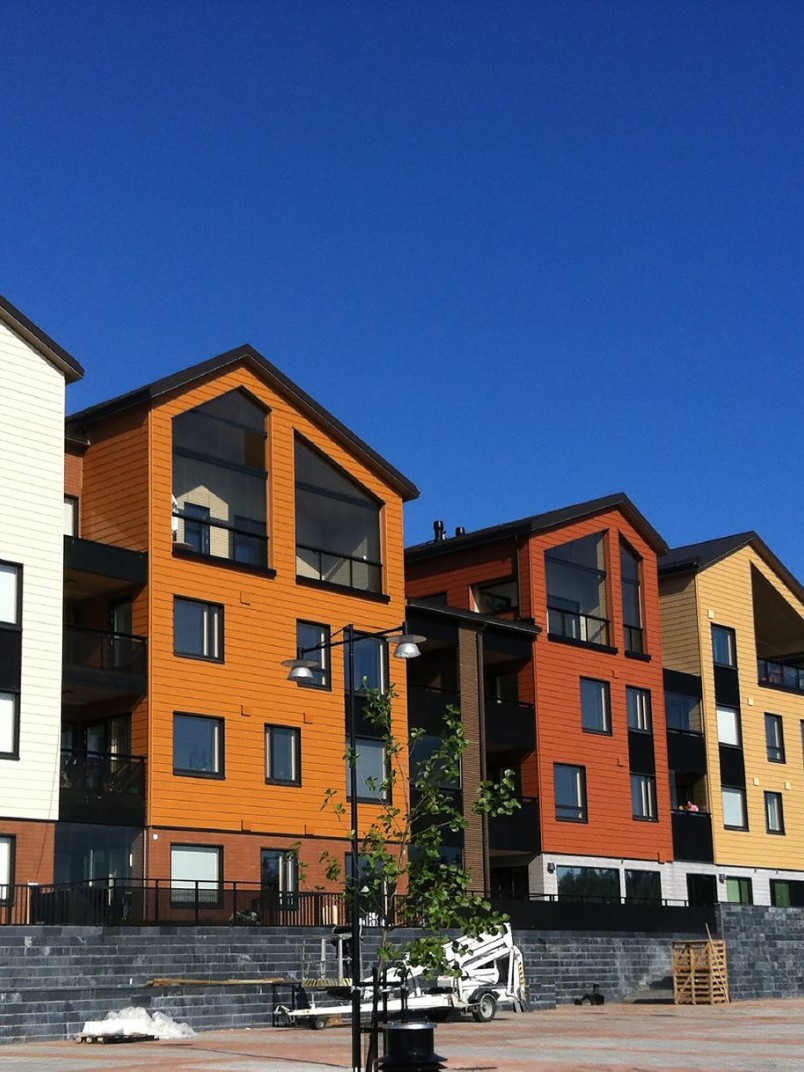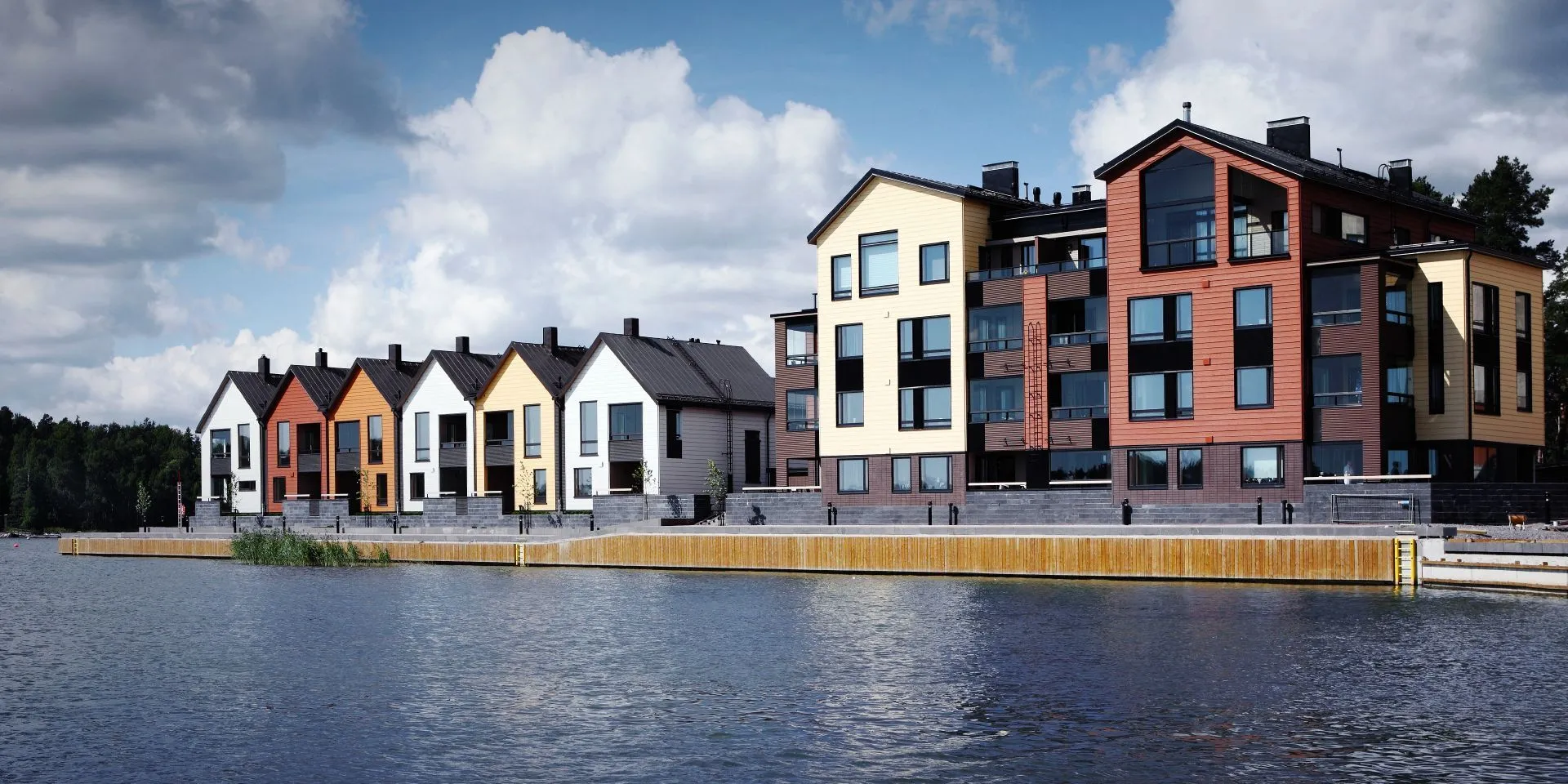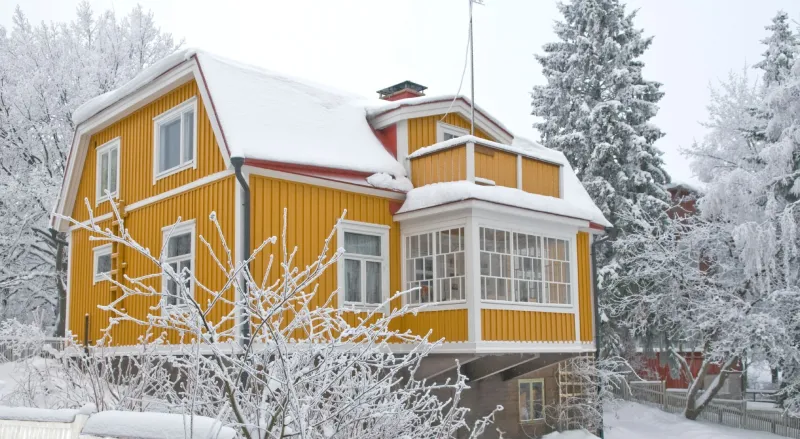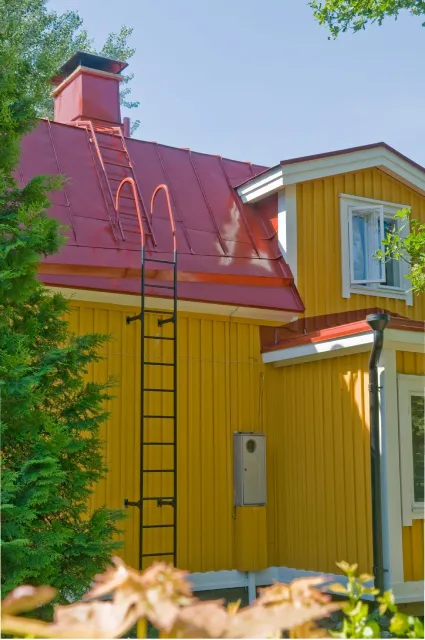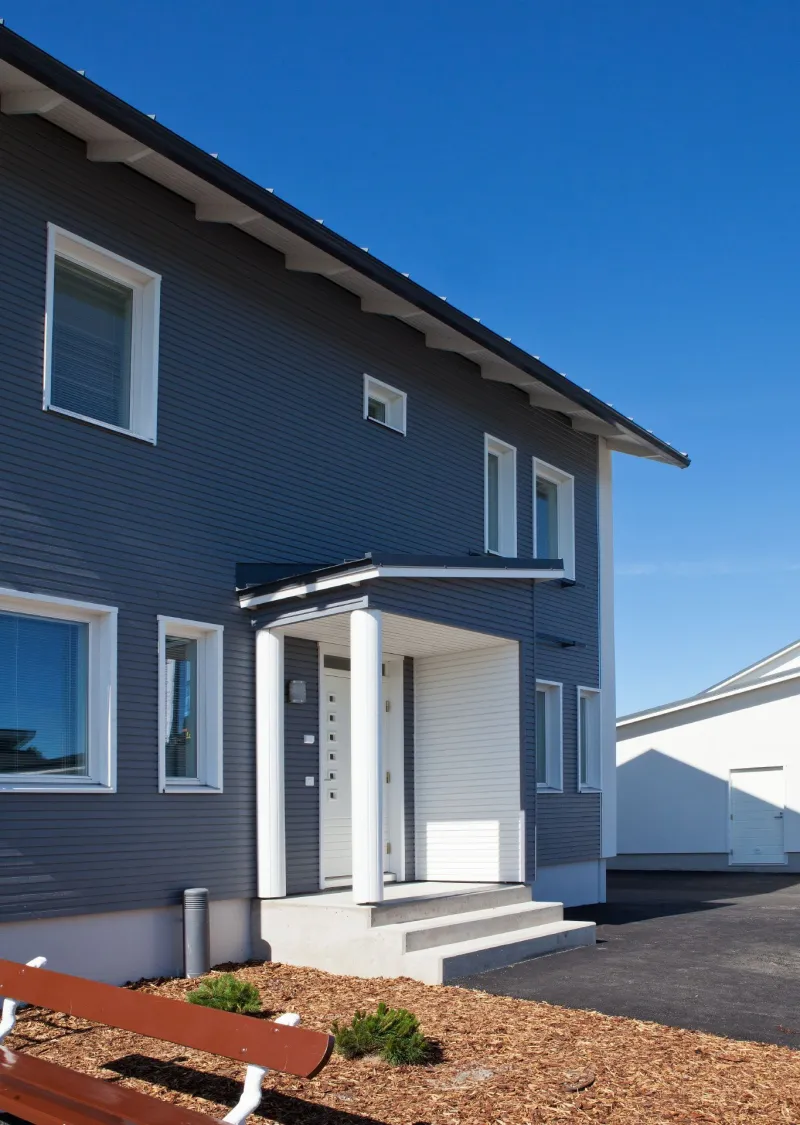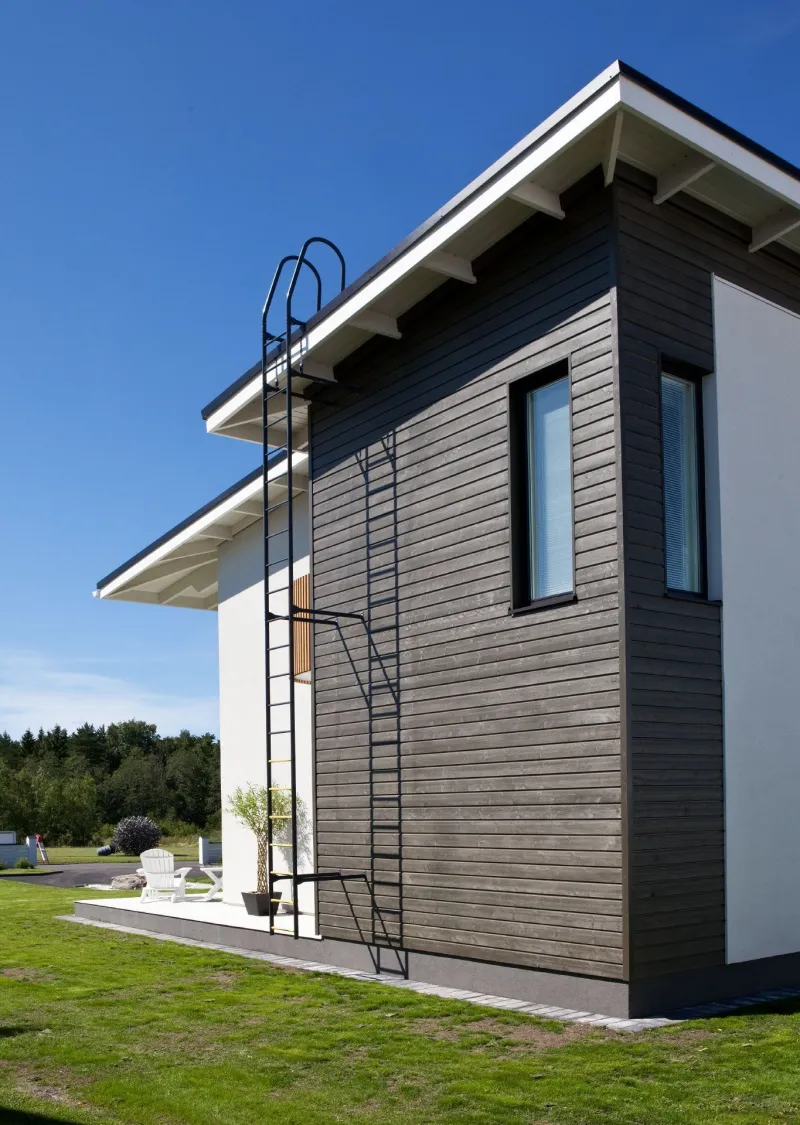Selecting the exterior colour is often more of a challenge than interior colours, and the mistakes are also visible to others. It is worthwhile to use a little time and effort in selecting the colour, because the choice is made for years to come.
Consider the landscape surrounding the building
The surroundings have an impact on the suitability of colours and set their own limits – is the building in a densely built urban area, in the countryside, on a field, surrounded by a forest, or by a lake.
Colours look different when you look at them close up or from far away. From far away, dark surfaces – regardless of the shade – will blend into their surroundings, whereas light surfaces will clearly stand out. In open and bright areas, the shade of buildings can be lighter, while a darker shade tends to look better on the edge of a dark forest.
The time of day, the weather, and the surroundings that change according to the seasons, affect the way we see colours. Autumn colours, snow in the winter, and the green shades of spring and summer all create a different frame for your chosen shade.
In some countries the use of colours is restricted in order to create a harmonious look. If you plan to make radical changes to the colours of a building, you should contact the local zoning authority. Otherwise, look at the surroundings with an open mind, find ideas in the nature and ready-made colour schemes.
The colour will look lighter on a large surface
Colours often look lighter and brighter on a large surface, surrounded by strong natural colours, than in the small sample against the white background of the colour chart. When looking at a colour chart, select a more broken, darker shade than you initially thought – this will usually get you closer to the desired final colour.
When choosing the exterior paint colour, you should study the colour sample in natural light and in the vertical direction. We recommend that you paint a test area the size of one square metre. Outdoors, the colour sample often looks lighter and bluer than indoors.
What to consider when selecting an exterior paint colour
When choosing the exterior paint colour, you should study the colour sample in natural light and in the vertical direction. We recommend that you paint a test area the size of one square metre. Outdoors, the colour sample often looks lighter and bluer than indoors. Particularly when viewed against the white background of the colour chart, exterior paints look considerably darker than they will in their natural environment. The time of year and day also affect the way we perceive colours, which means that the facade will look very different in the dim evening light and in the bright morning light.
Test the paint before your final decision
You can make it easier to choose the colour by test-painting a separate board or a piece of wood and by viewing the colour in the correct lighting and environment. When you use translucent products, remember that the shade and quality of the wood beneath the paint will affect the colour. Our Pika-Teho re-coating paint and translucent Valtti Color wood stain are available in 0.225 litre tester cans.
You’re visiting Tikkurila website from United Kingdom. Would you like to visit the local UK site?
